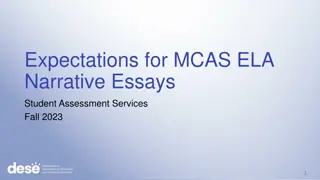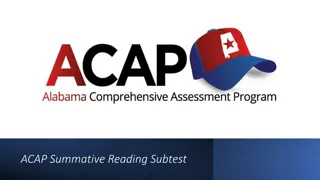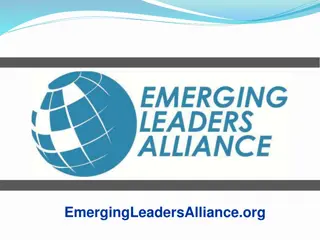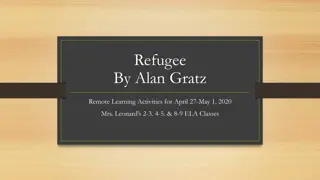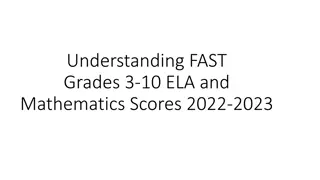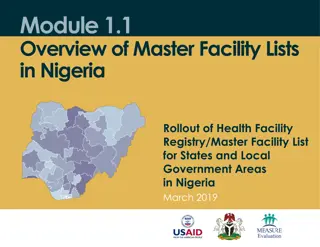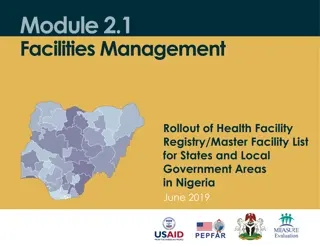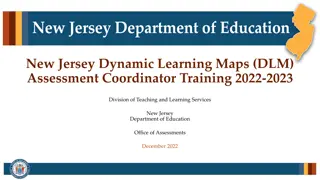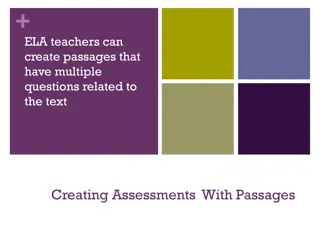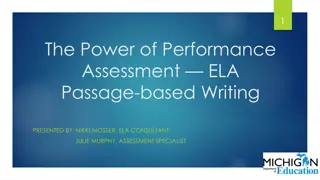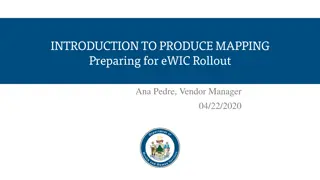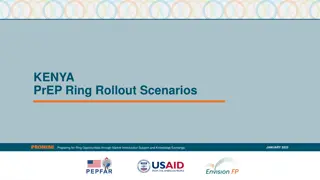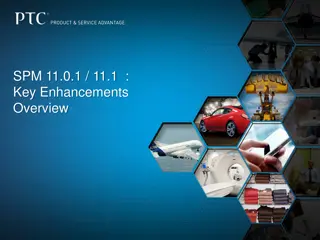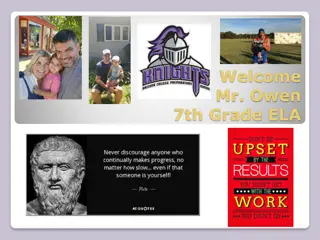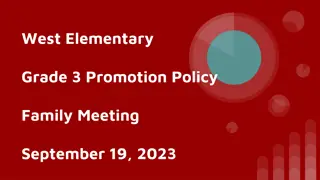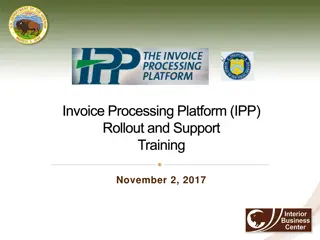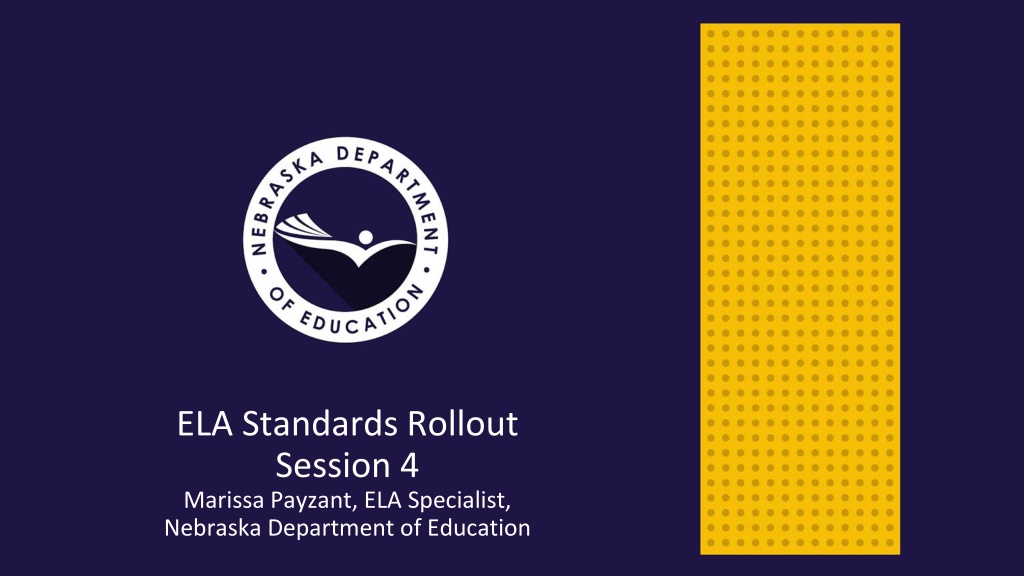
Implementing ELA Standards: Strategies for Success
Explore the rollout of ELA standards in Nebraska, focusing on articulating a shared vision, understanding major revisions, and preparing for implementation. Dive into priorities, resource allocation, and exploration activities to enhance education quality.
Download Presentation

Please find below an Image/Link to download the presentation.
The content on the website is provided AS IS for your information and personal use only. It may not be sold, licensed, or shared on other websites without obtaining consent from the author. Download presentation by click this link. If you encounter any issues during the download, it is possible that the publisher has removed the file from their server.
E N D
Presentation Transcript
ELA Standards Rollout Session 4 Marissa Payzant, ELA Specialist, Nebraska Department of Education
Standards Rollout Sequence Session 1: The Standards in Instruction Session 2: The 2021 Standards and Shifts Session 3: The Standards in Materials Session 4: Preparing to Implement
Initial Standards Rollout Goals 1. Articulate a shared vision of excellent ELA and literacy education for all Nebraska students. 2. Describe the major standards revisions (shifts) and how they contribute to the vision. 3. Prepare to marshal resources to support the implementation of the standards and the manifestation of the vision.
1. Setting Implementation Priorities Agenda for Today 2. Applying Relevant Resources 3. Committing to Next Steps
Five categories of work: 1. Alignment and transition 2. Communication 3. Instructional materials 4. Professional learning 5. Assessment and accountability
Exploration phase: Building understanding of revised standards and instructional shifts Assessing readiness to implement
Prioritizing Exploration Activities Teachers: School leaders: District leaders: Explore adaptations to lessons that provide opportunities for students to learn content from newly revised standards. Engage in stakeholder meetings to develop an assessment system vision that fulfills the goals of newly revised standards. Provide time and collaboration opportunities for teachers and administrators to create a professional learning plan.
Which of these actions do you think will be most challenging for you to take? Why? Skim through the actions in the column most relevant to your role. Then share:
Combining Exploration Activities Teachers: Teachers: Teachers: Deepen understanding of differences between legacy and newly revised ELA standards (including instructional shifts). Participate in professional learning related to the implementation of revised ELA standards and instructional shifts. Provide input to school/district administrators on needs related to the selection or use of instructional materials aligned to newly revised ELA standards.
Scenario 1 Your district used Nebraska Instructional Materials Collaborative reports to select high-quality, standards- aligned materials three years ago. Implementation was difficult at first, but teachers and students rose to the challenge, and achievement is growing steadily. Teacher turnover is low, and most teachers know and implement the state s 2014 ELA standards well. Collaboration between teachers on curriculum and instruction is minimal, and vertical content teams in particular rarely have dedicated time to work together.
What approaches or entry points to standards exploration do you suggest? What aspects of standards exploration do you suggest not prioritizing?
Scenario 2 Your district s instructional materials are a mixed bag. Texts are appropriately complex and varied, but supports for explicit instruction are limited, leaving teachers to fill in a lot of gaps. Some units are organized in ways that build students knowledge of specific topics, but in many the texts are unrelated to one another. The teaching force is highly mobile, and many teachers are novices. Most are very eager to learn about and implement the new ELA content standards, and few have deep familiarity with the 2014 standards.
What approaches or entry points to standards exploration do you suggest? What aspects of standards exploration do you suggest not prioritizing?
Scenario 3 Your elementary school is a close-knit community with highly skilled and experienced teachers committed to balanced literacy instruction and an organic approach to foundational reading and writing development. Teachers mostly create or source their own instructional materials, and collaboration focuses on analysis of data from literacy screener and benchmark assessments. Families have expressed concern about the amount of time many students spend in intervention settings without making substantial progress toward proficiency.
What approaches or entry points to standards exploration do you suggest? What aspects of standards exploration do you suggest not prioritizing?
1. Setting Implementation Priorities Agenda for Today 2. Applying Relevant Resources 3. Committing to Next Steps
The Instructional Core If you change any element, you need to change the others. Task predicts performance. Student Task City, Elizabeth A., Elmore, R., Fiarman, S., & Teitel, L. (2009). Instructional rounds in education. Harvard Educational Publishing Group. Teacher Content
NIMC Materials Selection Guidance Standards, Vertical Progressions, and Shifts Resources to Explore NeMTSS Essential Elements
How, specifically, might these resources be used to support implementation of the 2021 ELA content standards?
1. Setting Implementation Priorities Agenda for Today 2. Applying Relevant Resources 3. Committing to Next Steps
Looking Back: Sessions 13 Reflections 1. What roles do standards play in Nebraska s vision for excellent and equitable ELA instruction? What roles do they not play? 2. Given the 2021 shifts and revisions, what aspects of standards implementation do you anticipate being most challenging in your context? Why? 3. How confident are you that your instructional materials strongly support our standards, shifts, and vision? What next steps are you prioritizing?
Looking Back: Initial Rollout Sequence 1. Articulate a shared vision of excellent ELA and literacy education for all Nebraska students. 2. Describe the major standards revisions (shifts) and how they contribute to the vision. 3. Prepare to marshal resources to support the implementation of the standards and the manifestation of the vision. Session 1: The Standards in Instruction Session 2: The Standards and Shifts Session 3: The Standards in Materials Session 4: Preparing to Implement
Looking Forward: Planning Next Steps Considering your previous reflections, the content we ve discussed today, and the sample action steps provided in your reflection guide 1. What needs to happen in your school or district within three months? Six months? Twelve months? 2. What will you do to make it happen? How and when will you accomplish this? As part of your planning, consider who else you will need to involve and invest.
Nebraskas Vision for ELA Instruction Regular practice with complex texts and their academic language Reading, writing, and speaking grounded in evidence from varied texts Building knowledge both through and for content-rich nonfiction and fiction Systematic, explicit, evidence-based instruction in foundational literacy skills for ALL students
Thank you! Please complete the feedback form to help us plan further supports.


